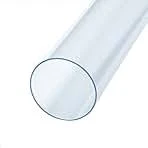Septemba . 05, 2024 17:17 Back to list
High-Quality PVC Drain Pipes for Reliable Drainage Solutions
Understanding PVC Drain Pipes A Comprehensive Overview
PVC, or polyvinyl chloride, has become an indispensable material in modern plumbing systems, particularly for drainage applications. Its unique combination of strength, durability, and chemical resistance makes it an ideal choice for both residential and commercial drain pipes. In this article, we will explore the characteristics of PVC drain pipes, their advantages, applications, and installation considerations.
Characteristics of PVC Drain Pipes
PVC drain pipes are lightweight yet robust, which significantly simplifies transportation and installation. These pipes are manufactured in various diameters to accommodate different flow requirements, typically ranging from 1.5 inches to 6 inches for household applications. One of the key features of PVC is its resistance to corrosion, which allows it to maintain structural integrity over time, even when exposed to harsh chemicals commonly found in household waste.
Another important characteristic is that PVC pipes have smooth interior walls, which facilitate better flow rates by minimizing friction and reducing the risk of blockages. Additionally, since PVC is not porous, it prevents the buildup of bacteria, making it a hygienic option for drainage systems.
Advantages of PVC Drain Pipes
The advantages of using PVC drain pipes are manifold. Firstly, their lightweight nature eases the burden during installation, requiring less manpower and resources than heavier materials like cast iron or concrete. This feature also allows for easier handling in confined spaces or overhead applications.
Secondly, PVC drain pipes are resistant to rust and corrosion, offering a longer lifespan with minimal maintenance. This longevity can translate into significant cost savings over time, as homeowners and businesses face fewer repairs and replacements. Moreover, PVC is an environmentally friendly option due to its recyclability, contributing to sustainable building practices.
pvc drain pipe

Lastly, the assembly of PVC pipes can be quite straightforward. They are typically connected using solvent cement, which creates a watertight seal, and their compatibility with various fittings makes them versatile for diverse applications.
Applications of PVC Drain Pipes
PVC drain pipes are widely utilized in a variety of settings. In residential construction, they are commonly employed for waste and vent systems, ensuring effective and efficient removal of wastewater. They are also used in underground drainage systems, such as French drains or stormwater management systems, where their resistance to water infiltration is beneficial.
In commercial settings, PVC pipes are frequently used for industrial drainage and sewage systems due to their high capacity to handle waste and their durable nature. Additionally, municipalities utilize PVC drain pipes in their infrastructure for sanitation and stormwater management, taking advantage of the material’s longevity and cost-effectiveness.
Installation Considerations
While installing PVC drain pipes can be relatively simple, certain considerations must be kept in mind. It is crucial to ensure that the pipes have appropriate slope and alignment to promote optimal drainage flow. Moreover, local building codes and regulations should always be reviewed and adhered to during installation to ensure compliance and safety.
In summary, PVC drain pipes represent an excellent option for both residential and commercial drainage systems. Their combination of strength, durability, and cost-effectiveness makes them a preferred choice among builders and plumbers. As the demand for efficient and sustainable plumbing solutions continues to rise, PVC drain pipes will undoubtedly remain at the forefront of industry practices.
-
Premium PVC Soft Sheets: Clear, Flexible & Durable
NewsAug.12,2025
-
Premium PVC Round Rods: Durable, Chemical Resistant, Easy to Machine
NewsAug.11,2025
-
PP U-channel: Chemical-Resistant, Lightweight & Durable
NewsAug.10,2025
-
Transparent PVC Pipe: Clear Flexible Tubing for Fluids
NewsAug.09,2025
-
Durable PP Rigid Sheet: Versatile & High-Quality Plastic Panels
NewsAug.08,2025
-
Premium Glossy PP Rigid Sheet – Durable & Versatile
NewsAug.07,2025

